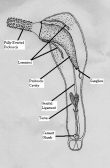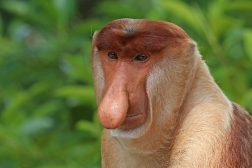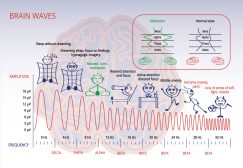Table of Contents
Proboscis Definition
What is proboscis? A proboscis refers to an elongated or projecting appendage in the head region of certain animals. In invertebrates, such as certain insects, annelids, mollusks, and ribbon worms, the proboscis is a hollow tubular cephalic appendage. In butterflies, in particular, their proboscis is connected to the oral region. Their proboscis, therefore, serves as a feeding or a sucking organ. In certain vertebrates, the proboscis is not attached to the mouth but may be formed as a fusion of the nose and the upper lip (as in snouts). Common examples of vertebrate proboscises are the elephant trunk and the elongated nose of the proboscis monkey.
Etymology
The noun proboscis (plural: proboscises or proboscides) is derived from the Ancient Greek “προβοσκίς” (proboskís). The latter, in turn, is a combination of the Greek words “προ”- (pro-) and “βόσκω” (bóskō, meaning “to nourish” or “to feed”).
Invertebrates
The proboscis of insects is usually a chitinous tube formed by the modified maxillae or by the labium. The proboscis of annelids and of mollusks is usually a portion of the pharynx that can be protruded. In Nemertea (ribbon worms), their proboscis is a special long internal organ, not connected with the mouth, and not used in feeding, but capable of being protruded from a pore in the head. See the images below for examples of invertebrate proboscises.
Acanthocephala

The acanthocephalans (also called thorny-headed worms) have an anterior eversible proboscis on its head that is studded with spines (see figure above). The organism uses it for attaching to the intestinal wall of its definitive host.
Lepidoptera proboscis


Description: A butterfly and its proboscis (left). A closer view of the butterfly proboscis (right). Notice that the proboscis consists of two galeae.
Lepidopterans include the butterflies and the moths. Many possess mouthparts consisting of maxillary galeae that are modified into a sucking organ called proboscis at the adult stage. In the example picture above, the butterfly has a proboscis that appears as a coiled structure under its head. The lepidopteran proboscis typically consists of one to five segments and usually coiled up when not in use. It uncoils and extends like a “sipping straw” when the insect begins to suck up and feed. (Ref.1) In the above example, the butterfly uses its proboscis to suck up nectar from flowers. The proboscis consists of two galeae.
The varying morphological features of lepidopteran proboscises reveal their different feeding habits. Hawkmoths, for instance, have elongated proboscises that enable them to insert and reach the nectar inside the long tubular flowers. Flower-visiting lepidopterans that feed on nectar have a relatively simple proboscis tip devoid of spines and with few sensilla. (Ref. 2) In contrast, non-flower-visiting lepidopterans that feed on the liquids of rotting fruits and on animal fluids have piercing proboscises. Their proboscis has “spines” and numerous sensilla at the tip. (Ref. 2) For example, some noctuid moths have a “spiny” proboscis to pierce the fruit rind and suck the fruit juice. The Asian vampire moths use their sharp proboscis to pierce the skin of its animal prey and drink its blood. (Ref. 3)
Gastropods

Kellet’s whelks (Kelletia kelletii) showing its long, prehensile proboscis as it feeds on a dead fish at Monterey Bay Aquarium. Image credit: Steve Lonhart / NOAA MBNMS (author) released the image to the public domain.
Vertebrates
In vertebrates, the proboscis refers to the elongated nose or the snout of certain animals. Examples are as follows:
- Snout of the male elephant seal
- Trunk of elephants
- Enormous nose of the proboscis monkey
- Snout of anteater
- Proboscis of tapir

References
- Molecular Expressions: Science, Optics & You – Olympus MIC-D: Darkfield Gallery – Butterfly Proboscis. (2019). Fsu.Edu. https://micro.magnet.fsu.edu/optics/olympusmicd/galleries/darkfield/butterflyproboscis.html
- Molecular Expressions: Science, Optics & You – Olympus MIC-D: Darkfield Gallery – Butterfly Proboscis. (2019). Fsu.Edu. https://micro.magnet.fsu.edu/optics/olympusmicd/galleries/darkfield/butterflyproboscis.html
- Zenker, M. M., Penz, C., Paris, M. de, & Specht, A. (2011). Proboscis Morphology and Its Relationship to Feeding Habits in Noctuid Moths. Journal of Insect Science, 11(42), 1–10. https://doi.org/10.1673/031.011.0142
©BiologyOnline. Content provided and moderated by BiologyOnline Editors.







